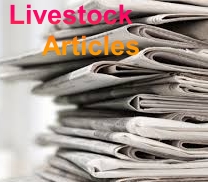Ostrich Farming Industry of South Africa
Free-range ostriches in lusern pastures near Oudtshoorn.
South Africa was the first country in the world where ostrich farming started on a commercial basis, in the mid-1820s feathers were harvested from live ostriches. The Ostrich Farming Industry of South Africa has grown enormously and South Africa is now the world’s largest supplier, 75% of ostrich products.
A warm dry climate, excellent farm management, ive breeding, technologically advanced egg incubators and certified ostrich abattoirs deliver products of supreme quality, mainly to the European Union.
South African ostrich products include fresh and processed meat such as ostrich fillets, biltong and sausage, ostrich leather products and ostrich feather products.
History of Ostrich Farming in South Africa
Around 1820 South African ostrich feathers were first exported. These feathers were harvested from wild hunted ostriches, but in 1821 a law was published, which prohibited the hunting of ostriches in South Africa. Ostrich farming started during the 1860s in the arid regions of the Karoo and Eastern Cape in South Africa. These hardy birds were well-adapted to the dry and open inland areas of these regions. In 1865 there were only 80 tame ostriches in South Africa, but numbers increased rapidly, particularly when the use of egg incubators became popular. Ten years late in 1875, South Africa had more than 32 000 ostriches.
For decades South Africa was the sole provider of ostriches in the world, with strict laws preventing the export of live birds. However, the huge, and expensive, demand for ostrich feathers for the fashion industry in the 1860s lead to the start of ostrich farming in the Southern US and Australia. After WWI, the feather industry collapsed and suffered a slow-down until the end of WWII, when the ostrich trade slowly recovered, by including ostrich products such as skins and meat. The first ostrich abattoir in South Africa started operating in 1950 and in 1993 the first abattoir for the export of ostrich to Europe was built. In the town of Oudtshoorn, the ‘ostrich capital’ of South Africa, ostriches provide an additional source of income in tourism.
Ostrich Producers in South Africa
Historically, ostrich production centred around the town of Oudtshoorn in the Western Cape. Even today, Oudtshoorn is considered the ‘ostrich capital’ due to the volume of ostrich products from this area. Wild ostriches prefer arid regions with small shrubs, therefore, the commercial production of ostriches flourishes in areas with a hot and dry climate. Between 80% and 90% of South Africa's ostrich production comes from the Western Cape with various volumes from the Eastern Cape, Northern Cape and some production from Limpopo, where a small ostrich abattoir slaughters about 8 000 ostriches annually.
The main production areas for ostriches in South Africa are mainly in the southern Cape areas from George to Swellendam and in the Klein Karoo. Some ostrich production occurs in the Eastern Cape, around Aberdeen/Graaff Reinet and Aliwal Noord/Burgersdorp, with a little bit in Fish River irrigation area. In the Northern Cape, ostriches are produced around the Fraserburg/Merweville area. There is limited ostrich production in the Free State and Limpopo Provinces.
Small-scale Ostrich Farmers in South Africa
Ostrich farming is a high-risk industry, which demands a consistent supply of a very high-quality product. It is also very capital intensive and can take up to 30 months before money can be obtained from the business. The Peddie small-scale ostrich farming project in the Eastern Cape managed by the Klein Karoo Group Transformation Trust started in 2010 after being remodelled from the Kula Sizwe initiative. Kula Sizwe started in 2003 with 12 farmers taking loans from Eastern Cape Rural Finance Corporation (ECRFC). This project grew to 60 farmers producing about 10 000 ostriches a year by 2015, representing 10% of Klein Karoo International’s raw material supply.
Klein Karoo International is a major producer and exporter of ostrich products. This project was put on hold after an export ban, which resulted in diminished returns for the small farmers, but continues to be a practical model to include new ostrich farmers in a profitable and economically viable way in the ostrich export business. "They are directly exposed to mentorship, export and direct marketing as well as commercialisation”, says Dr Adriaan Olivier, the veterinarian previously responsible for enterprise development of the Peddie project. Various other empowerment projects are working in the ostrich industry both as workers trusts in processing and value adding or primary production of ostriches.”
Ostrich Species for Farming
The Kenyan ostrich. Note the small feathers on the female's head.
Wild ostriches have roamed the African continent for centuries. These animals featured in Egyptian hieroglyphs and rock art, their feathers adorned the helmets of Roman warriors and North African tribes used the leather as shields. Initially, feathers for Europe’s fashion industry were harvested from wild ostriches, but in the 1800s ostriches were domesticated, and so farming and cross-breeding of the ostrich species began. Initially, only ostrich feathers were valued and used for fashion items from the 1860s to the 1940s, but later also the leather and meat of ostriches were utilised.
What is an Ostrich?
The ostrich, Struthio camelus, is native to Africa and the largest bird on the planet. It can not fly but can run up to 70 km/h when threatened. Males (roosters) have black and white feathers, grow up between 2.4 and 2.7 m tall and weigh up to 150 kg, but females (hens) adorned with grey and white plumage, are slightly smaller.
The ostrich’s long neck, which is almost half the height of the bird, is almost hairless and reddish to blue in colour, while its legs are bare. Males and females form small groups, usually a rooster with a few hens, and both genders take turns to hatch their eggs. Females will lay eggs in communal nests with the females doing the day-light duty of incubating the eggs, while the males will sit on the eggs at night.
Ostrich eggs are about 15 cm long and 12 cm in diameter. The eggs can be used for eating or the shell used for decoration, in jewellery and household items. In commercial ostrich farming, eggs are incubated to allow chicks to hatch.
Ostrich Species for Farming
There are various ostriches species in the world. These include the Somali ostrich (Struthio camelus molybdophanes) whose females are larger than males. The Somali ostrich male’s neck and thighs are grey-blue. The Masai ostrich or red-neck ostrich (Struthio camelus massaicus) has small feathers on its head and an orange neck and thighs. The North African or Barbary ostrich (Struthio camelus camelus) is the largest of all ostrich species. The southern ostrich (Struthio camelus australis) is the original wild ostrich found in South Africa.
In the early years of ostrich farming in South Africa, farmers imported the North African ostrich to improve the local South African ostrich. This produced the South African black neck or Struthio camelus domesticus. This species is considered a composite breed and is, therefore, not regulated by the Convention on International Trade in Endangered Species of Wild Fauna and Flora (CITES). Somali and red-neck ostriches are used for farming in East Africa, but they are large and aggressive with poor feather quality.
The South African ‘black birds’ are smaller and easier to manage. The South African black ostrich is often recommended for new ostrich farmers and is widely farmed in South Africa as they produce superior long feathers and good leather and meat.
By Marinda Louw

.jpg)






